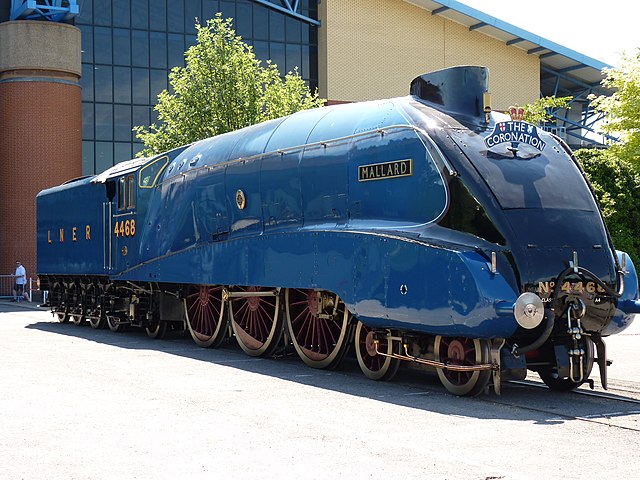A water trough, or track pan, is a device to enable a steam locomotive to replenish its water supply while in motion. It consists of a long trough filled with water, lying between the rails. When a steam locomotive passes over the trough, a water scoop can be lowered, and the speed of forward motion forces water into the scoop, up the scoop pipe and into the tanks or locomotive tender.
New York Central Railroad's Empire State Express takes on water from the track pan at Palatine, New York, in 1905.
Ramsbottom water troughs on a four-line stretch of the West Coast Main Line, England, in 1904
Diagram of LNWR tender apparatus from 1862
LSWR K10 class locomotive with "water cart" tender
A steam locomotive is a locomotive that provides the force to move itself and other vehicles by means of the expansion of steam. It is fuelled by burning combustible material to heat water in the locomotive's boiler to the point where it becomes gaseous and its volume increases 1,700 times. Functionally, it is a steam engine on wheels.
LNER Class A4 4468 Mallard is officially the fastest steam locomotive, reaching 126 mph (203 km/h) on 3 July 1938.
LNER Class A3 4472 Flying Scotsman was the first steam locomotive to officially reach 100 mph (160 km/h), on 30 November 1934.
The Salamanca locomotive
The Locomotion at Darlington Railway Centre and Museum








